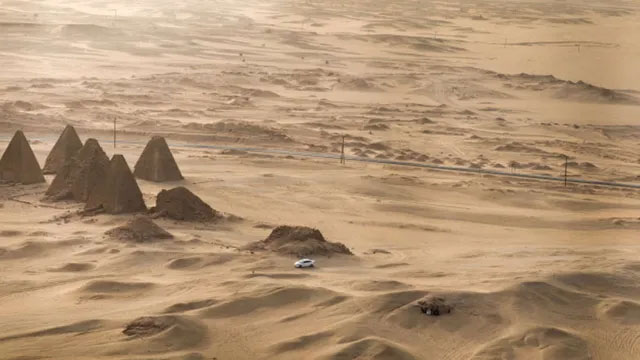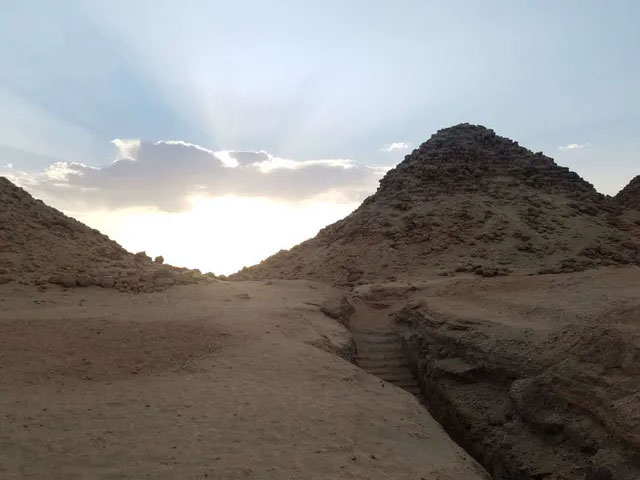The mystery of the forgotten pyramids in Sudan
Nuri's "forgotten" pyramid area is a challenge for many veteran adventurers.
Nestled amid the ancient pyramids like the large mounds jutting out of the Nubian sand in northern Sudan, is a 65-step staircase leading to a puddle of muddy water. The only way to get into the room is to bury it under that muddy puddle and soak and swim through a series of submerged inner chambers. But this was not enough to prevent archaeological expeditions in Nuri.

Pyramid area in Sudan.
According to a report by National Geographic, a group of recent archaeologists ventured into a submerged tomb in Nuri's ancient royal burial site, becoming the first to see the pharaoh's tomb in the least. a century.
The Royal Pyramid and Nuri Royal Cemetery are found in modern northern Sudan, along the west side of the Nile. Up to 80 pyramids were built between 650 and 300 BC.
The pyramids were the final resting place for up to 60 kushite kings and queens, known as the black pharaohs of the Nubian kingdom , who vied for power against Egyptian neighbors.
The burial room is not always submerged in water, although it has been proven to be a great protector against grave robbers for over 100 years.

The road down to the pyramid.
In fact, graves were only flooded in recent decades because the nearby Nile groundwater is rising due to climate change, agricultural intensification and a new dam built along the Nile.
In order to access the flooded inner compartments, the excavation team must dive into the water with a pump of oxygen from the surface. This is said to be the first underwater archeology made in Sudan.
"There are three compartments with beautiful domed ceilings, about the size of a small bus, you walk in a chamber next to it, it's dark, you'll know you're in a grave if your flashlight You are not bright, and it begins to reveal the secrets kept inside , " said Pearce Paul Creasman, an archaeologist involved.
Creasman added: "The gold offerings are still there, the glass figurines are inlaid with gold. Although while the water destroys the underlying glass, small gold scales remain intact."
- Where are the most Pyramids in the world?
- Unique pyramids are not located in Egypt
- Where are the most Pyramids in the world?
- Unique pyramids are not located in Egypt
- Pyramids and things you do not know!
- Theories about how to build pyramids in ancient Egypt
- The mysterious Chinese pyramids exist today
- Find out how the Egyptians moved giant stones to 800km to build pyramids
- New discovery of ancient Egyptian tools using the construction of the Giza Pyramid
- The mystery of the mummies
- Video: The secret inside the Pyramid
- How was the Egyptian pyramid built?
- The mystery of famous cities thought to be forgotten but suddenly appeared
- The cosmic particle may be the way to find out how the pyramid was built
 Discovered an ancient centipede fossil 99 million years old
Discovered an ancient centipede fossil 99 million years old Discovered bat-like dinosaurs in China
Discovered bat-like dinosaurs in China Discovered a 200-year-old bronze cannon of the coast
Discovered a 200-year-old bronze cannon of the coast Discover 305 million-year-old spider fossils
Discover 305 million-year-old spider fossils